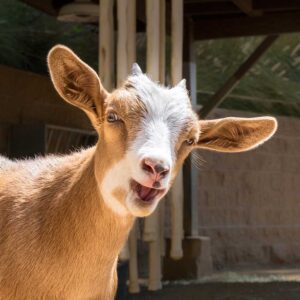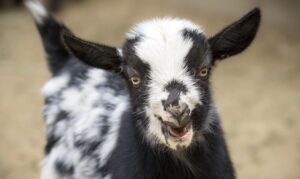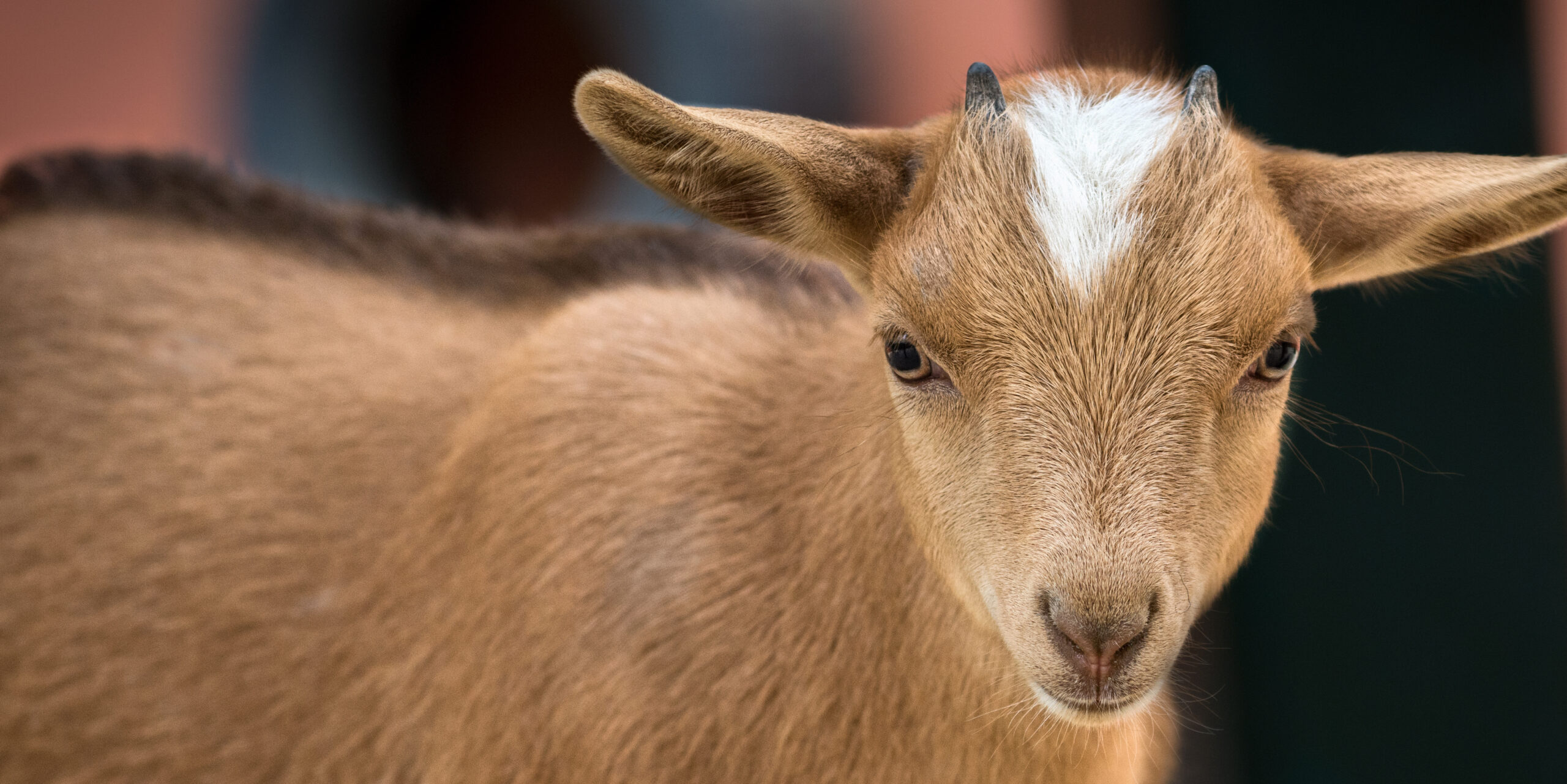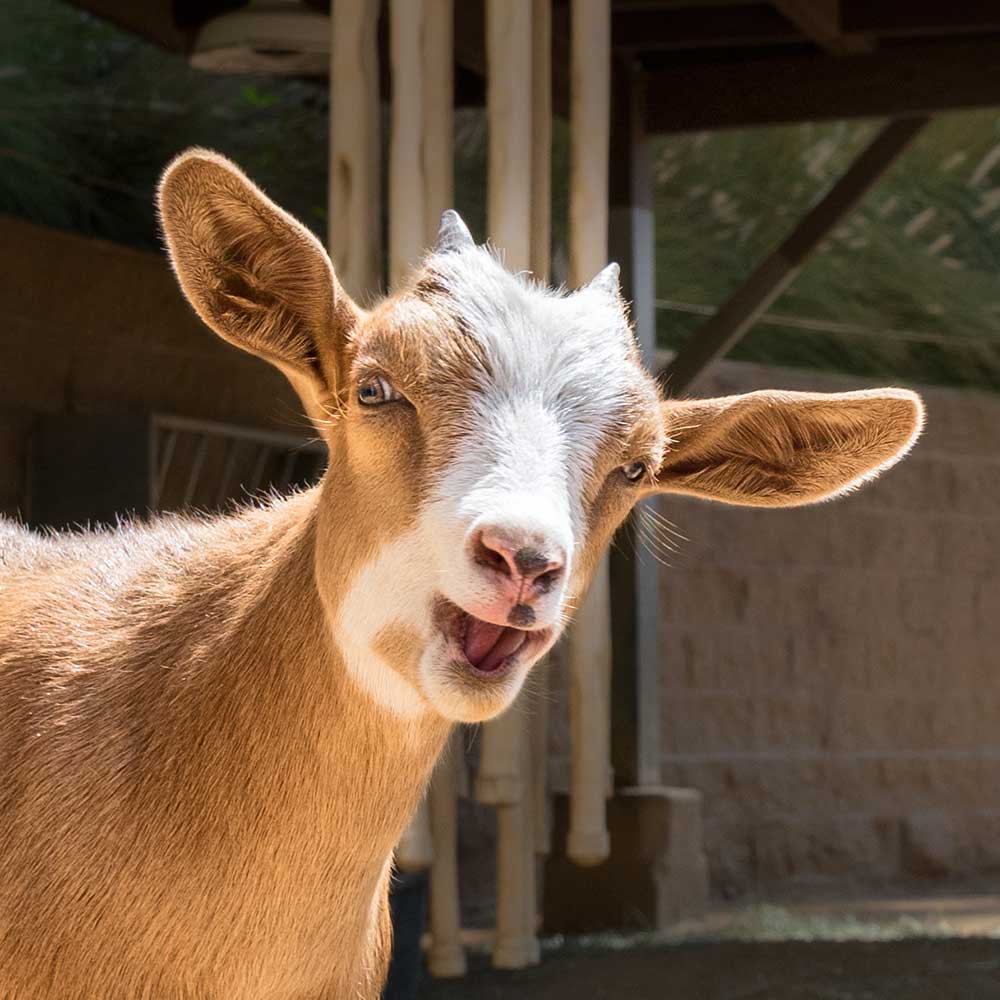About
Goats were domesticated by humans between 9,000 and 7,500 BCE. This played an important role in the shift from a hunter-gather to agrarian culture. Originating in West Africa, Nigerian dwarf goats have also been known as pygmy goats due to their small size. They are valued as both livestock and companion animals. Prized for their milk, which is high in butterfat and makes good cheese and butter, these goats can produce two quarts of milk a day. Goat milk is more easily digested than cow milk. Goats also produce wool and meat, and even their dung is useful as fertilizer. Goats are not picky eaters and can live in barren places on small lots of land where sheep and cattle cannot find enough to eat.
Nigerian dwarf goats were brought to the U.S. in the 1950s. They are known for their even temperament and playful personalities. Goats have well-developed herding instincts and prefer to live in groups of 5 to 20. In California, goats have found a niche as weed control specialists to prevent forest fires. Nimble climbers, they are especially effective on steep hillsides and will eat many weeds including poison oak, which does not appear to affect them.


Habitat
Nigerian dwarf goats originated in West Africa, but they can thrive in almost any habitat.
Diet
These browsers feed on grasses, shrubs, woody plants, weed, and briars.
Physical Characteristics
Body length is roughly two feet at the shoulder. Weight can be up to 75 pounds. Males are larger. Lifespan averages 15 years.
LOCATION IN THE ZOO
This animal can be viewed at Muriel’s Ranch in the Winnick Family Children’s Zoo. See Zoo Map.



